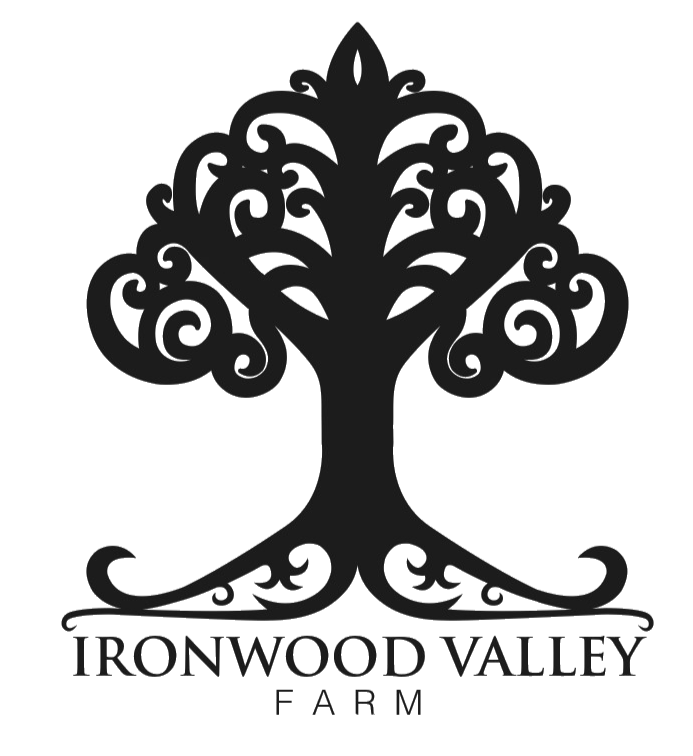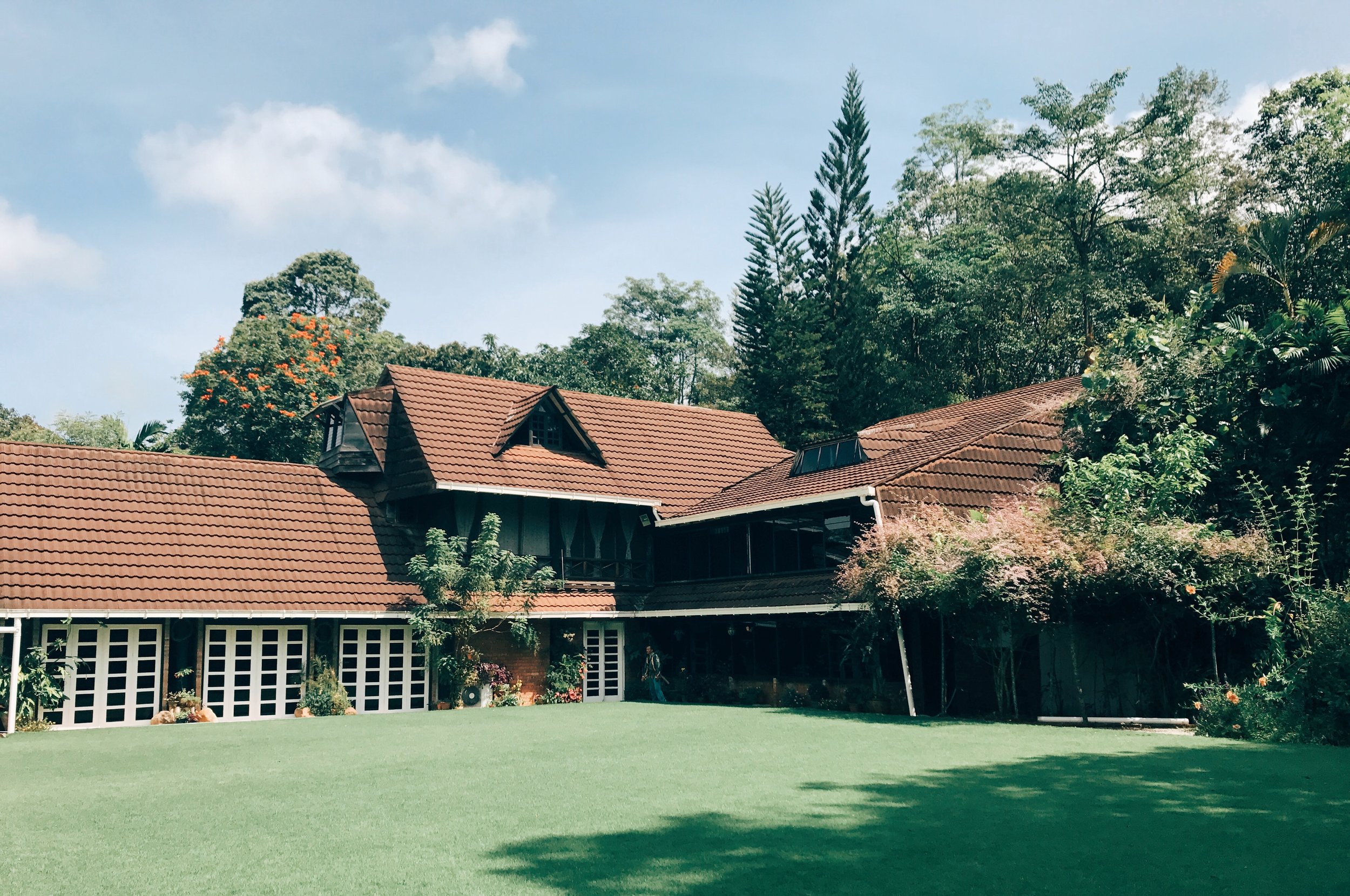
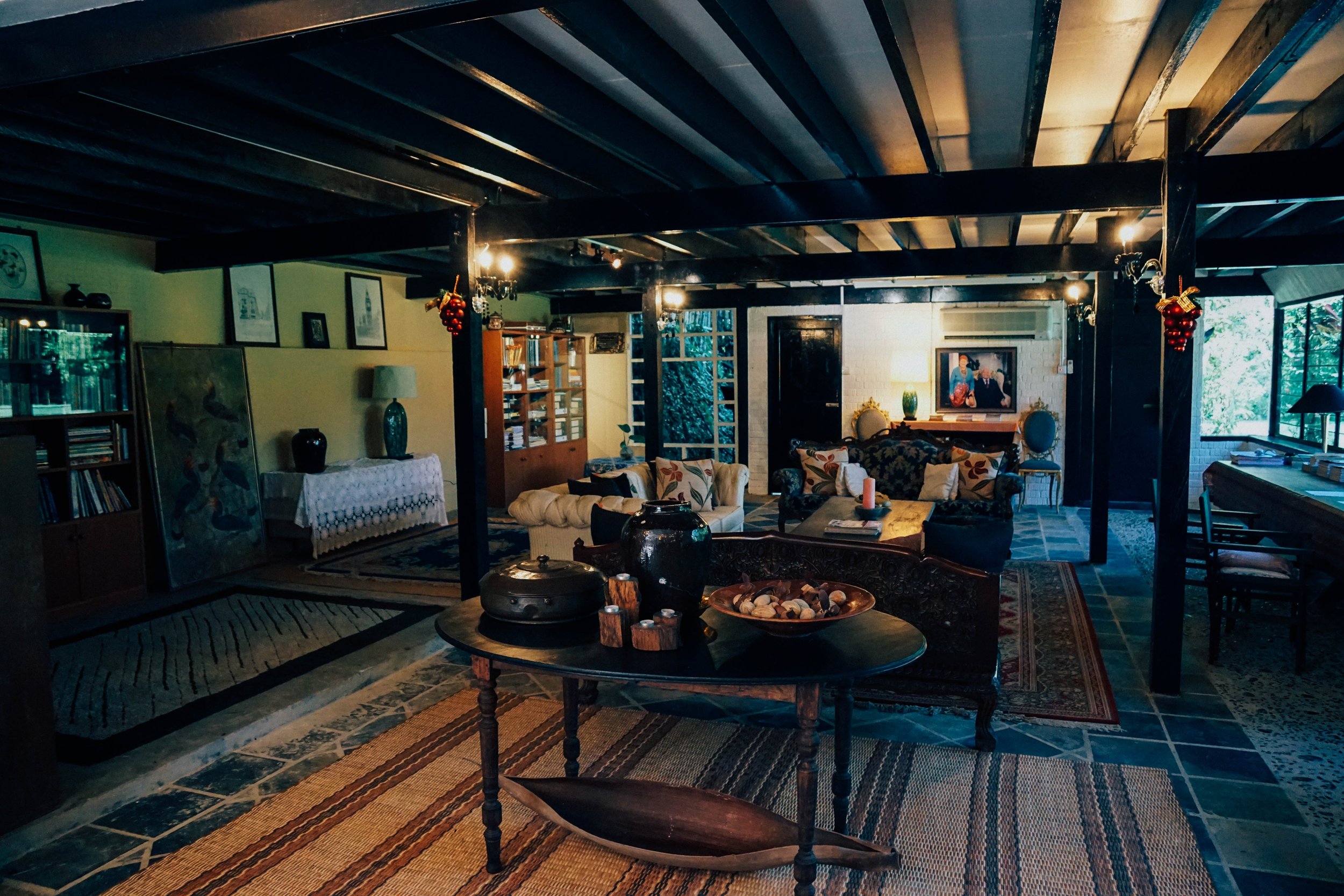

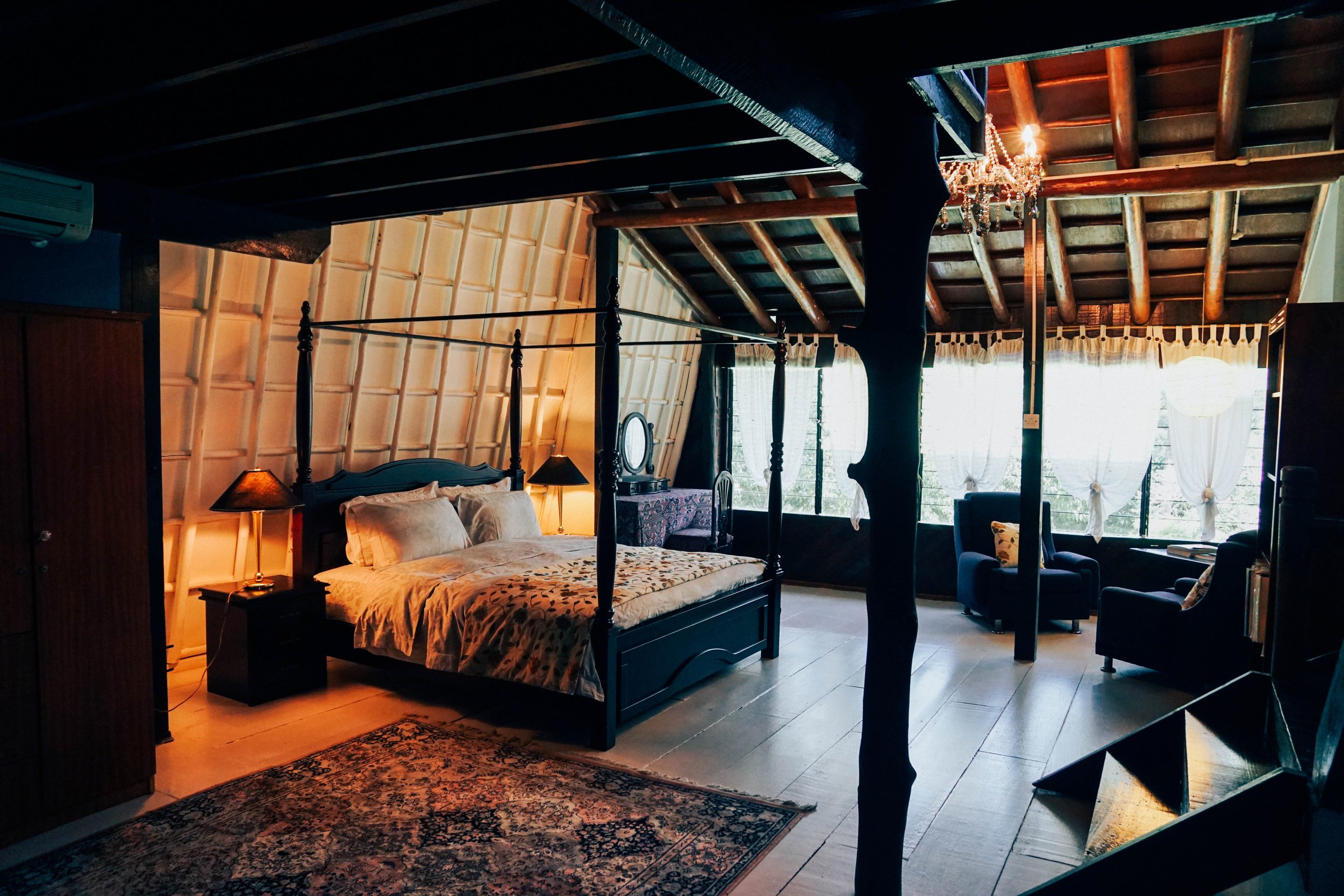
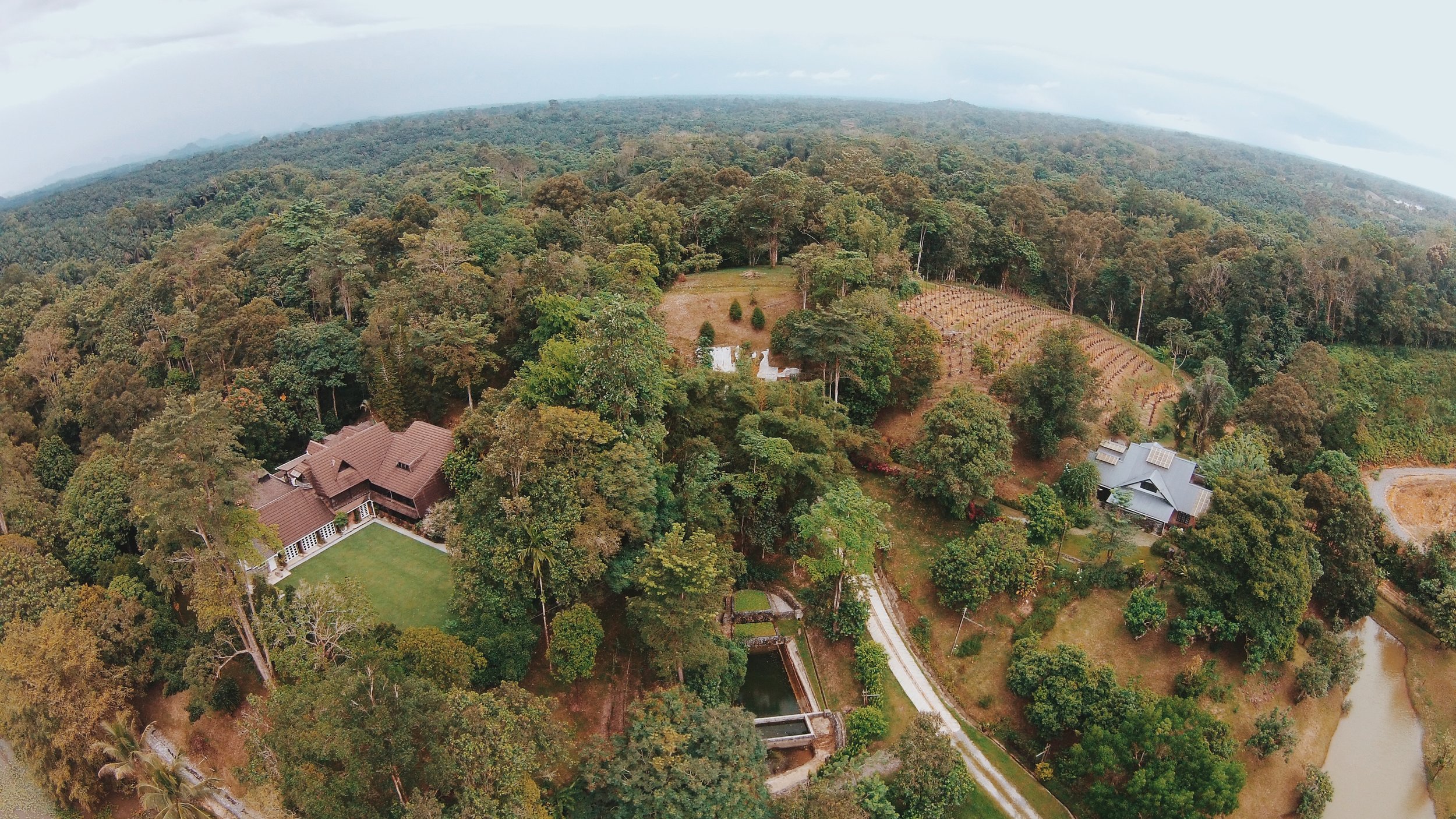
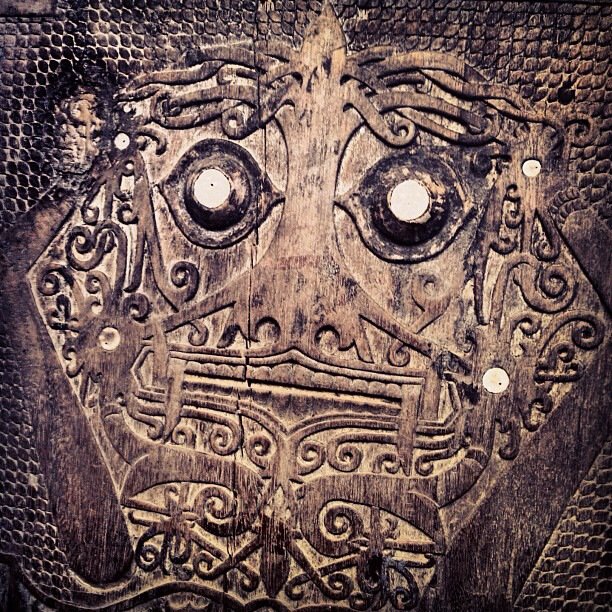
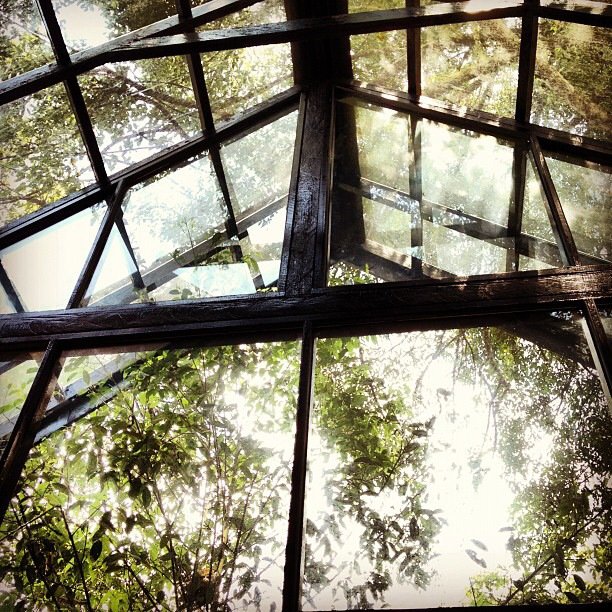
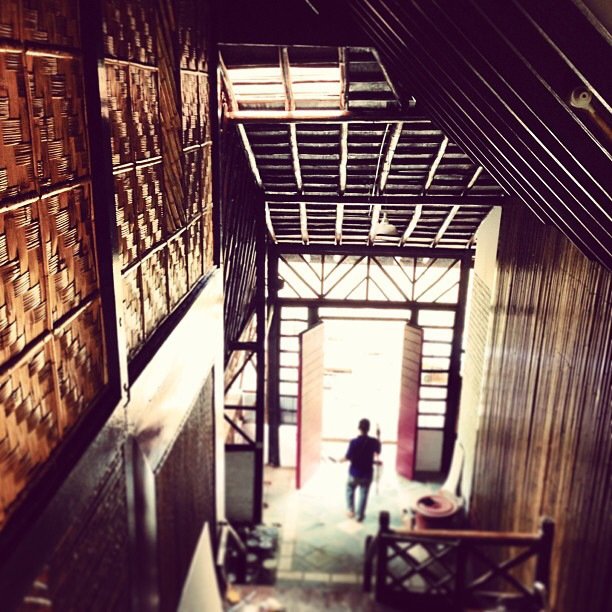
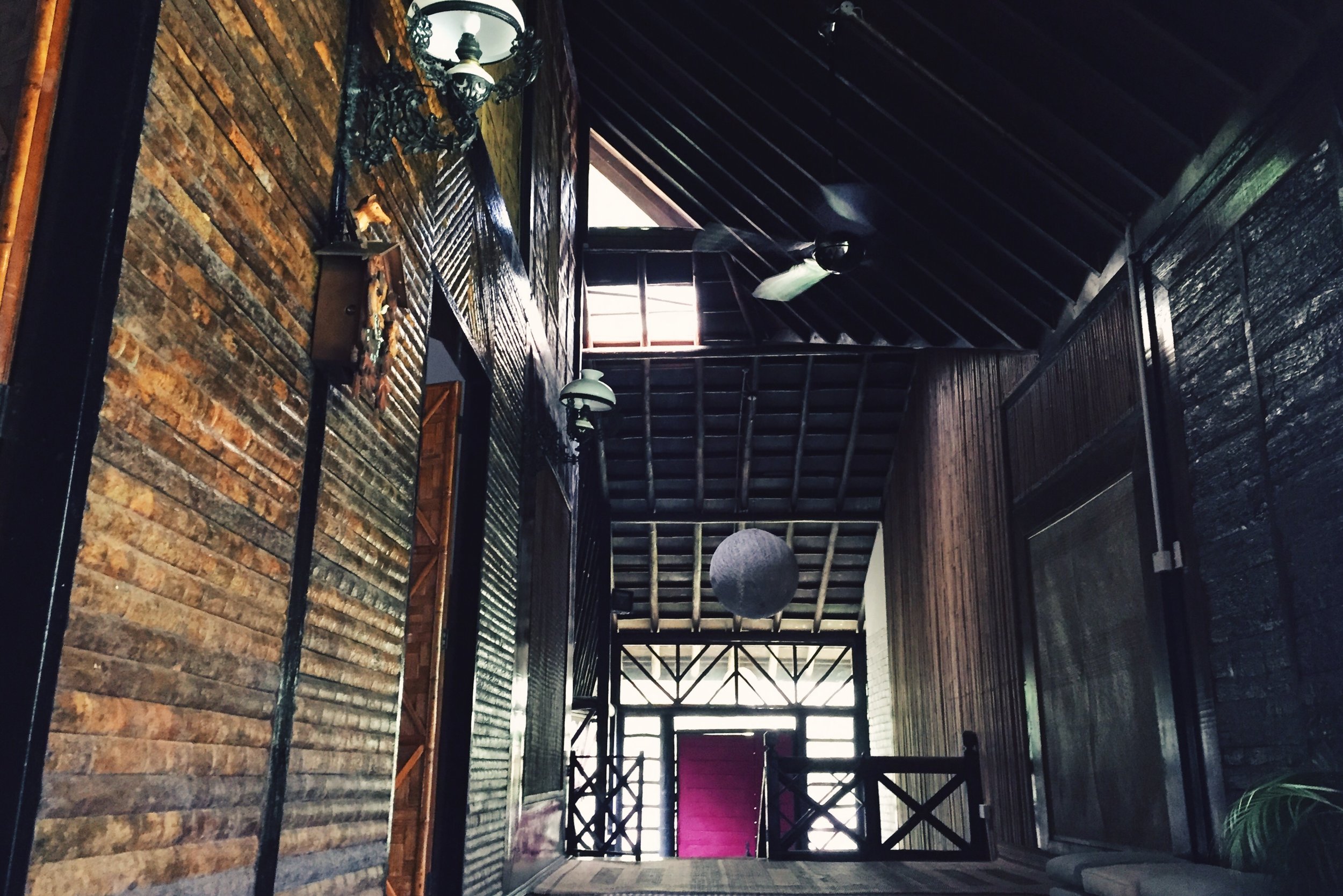
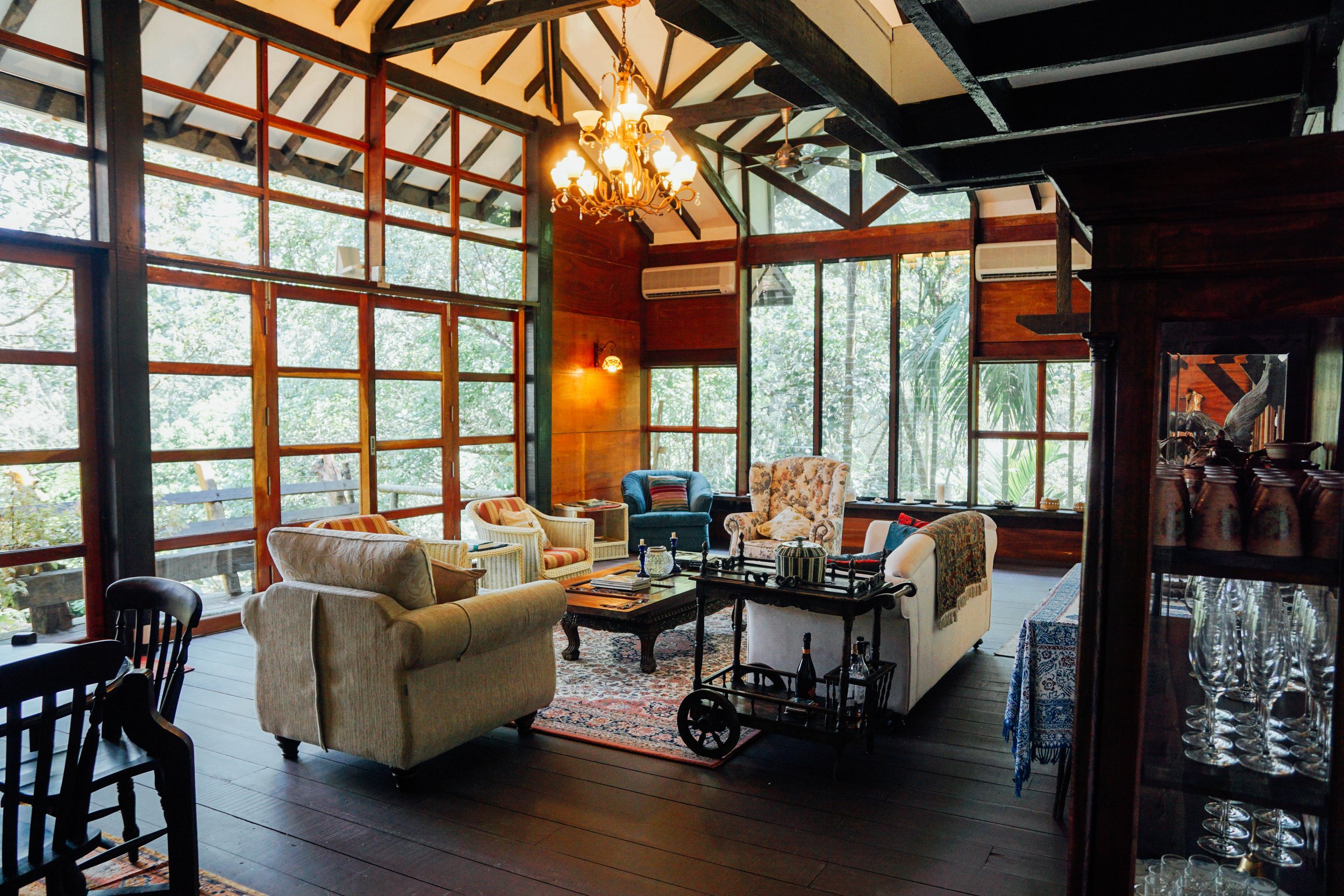
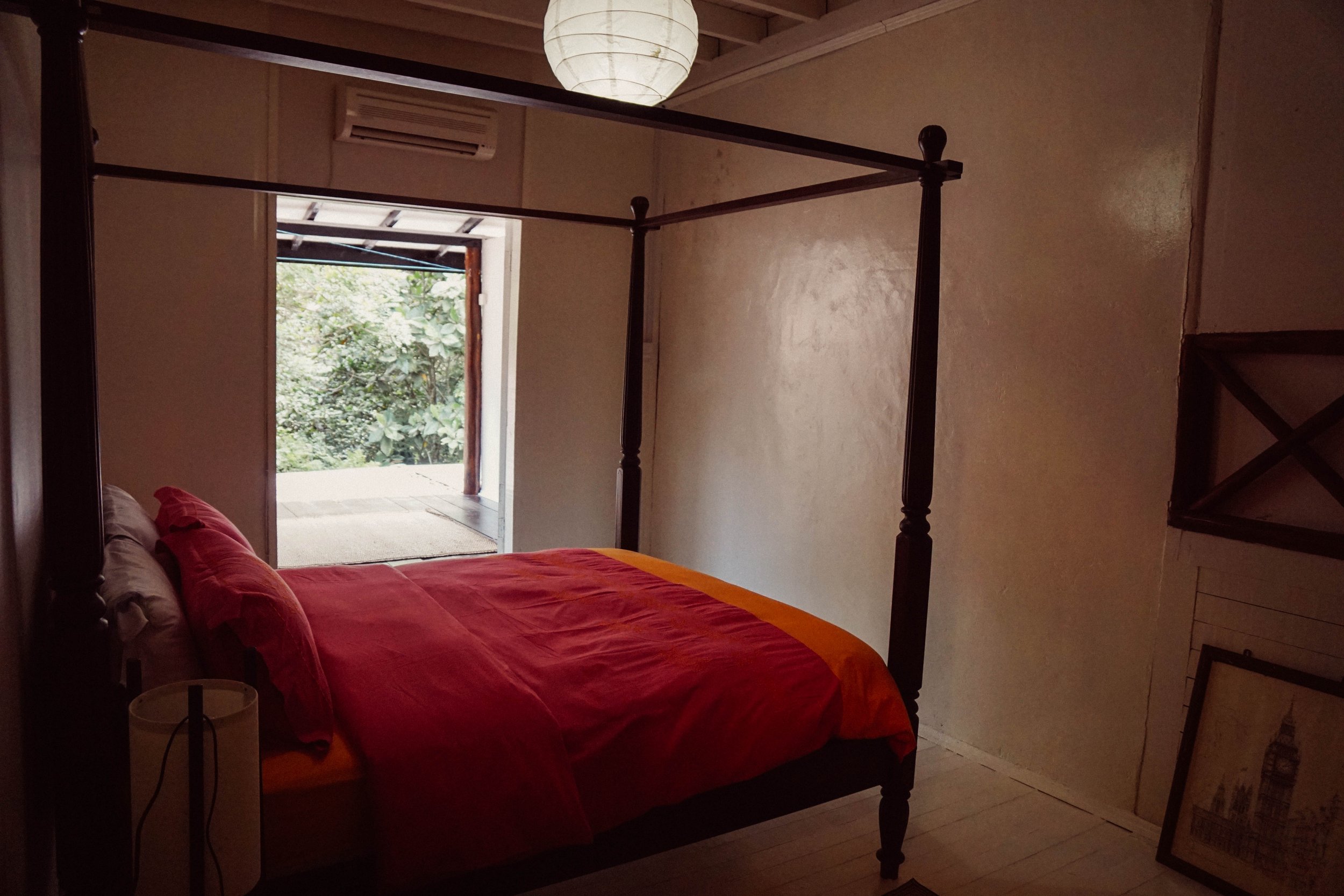
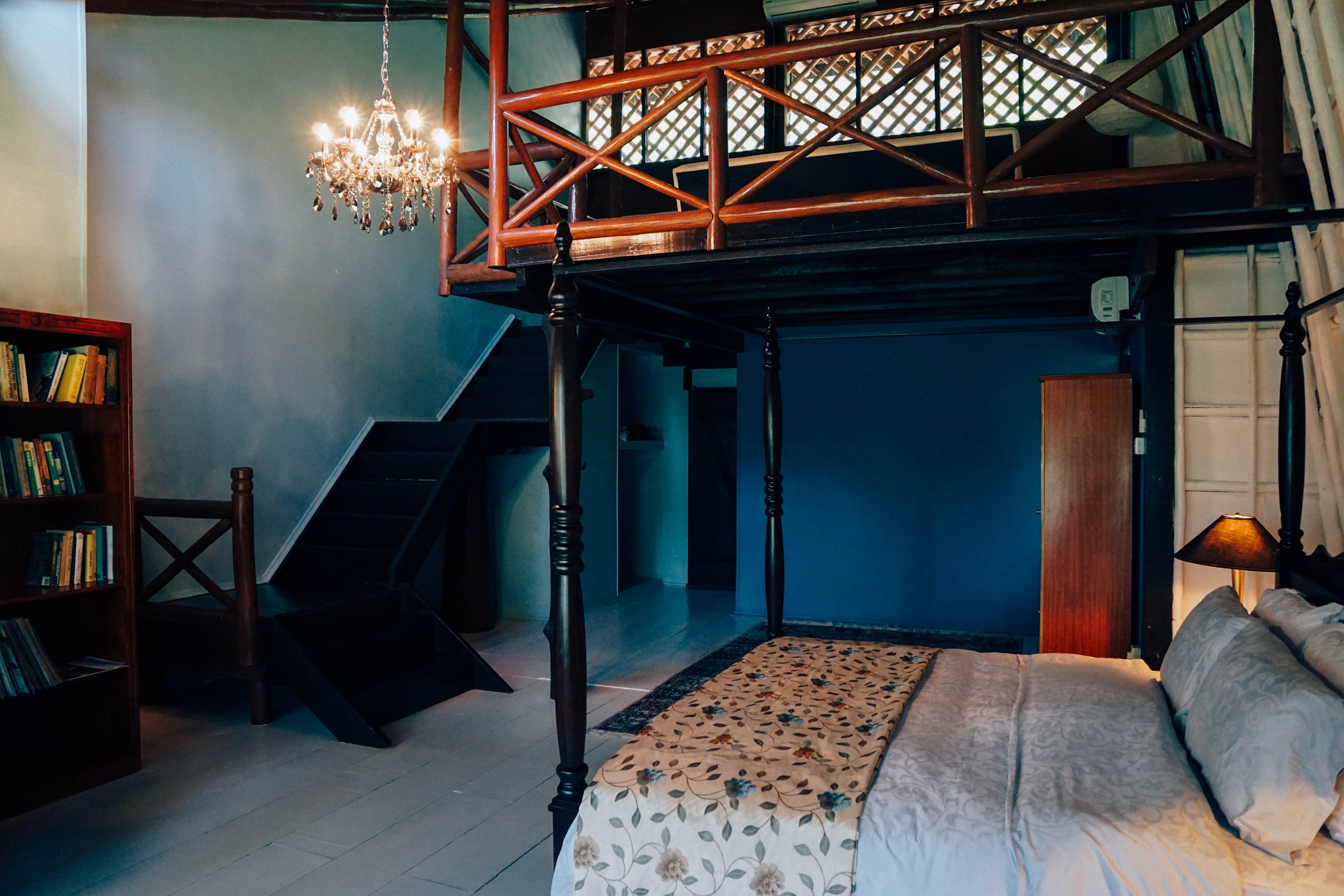
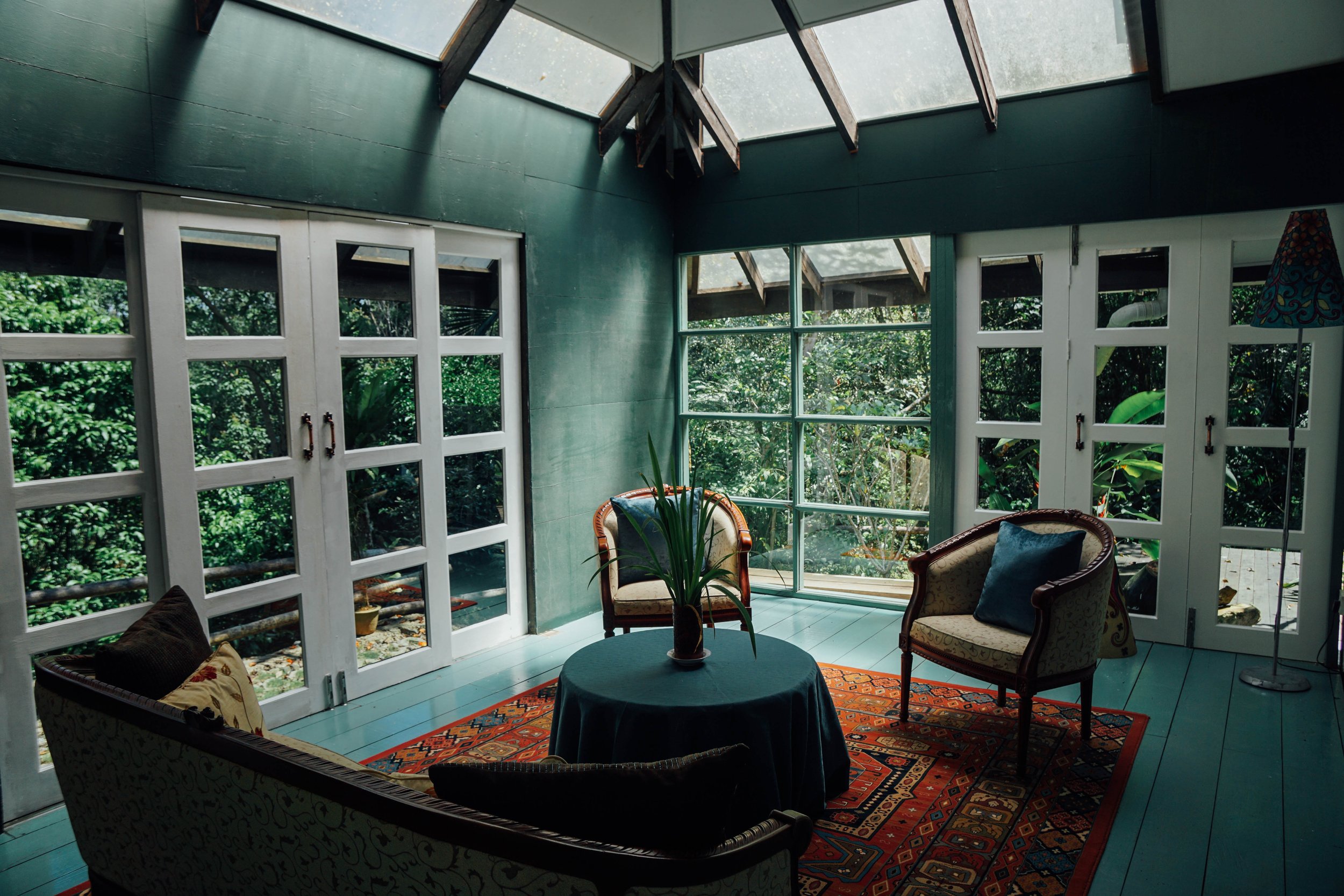
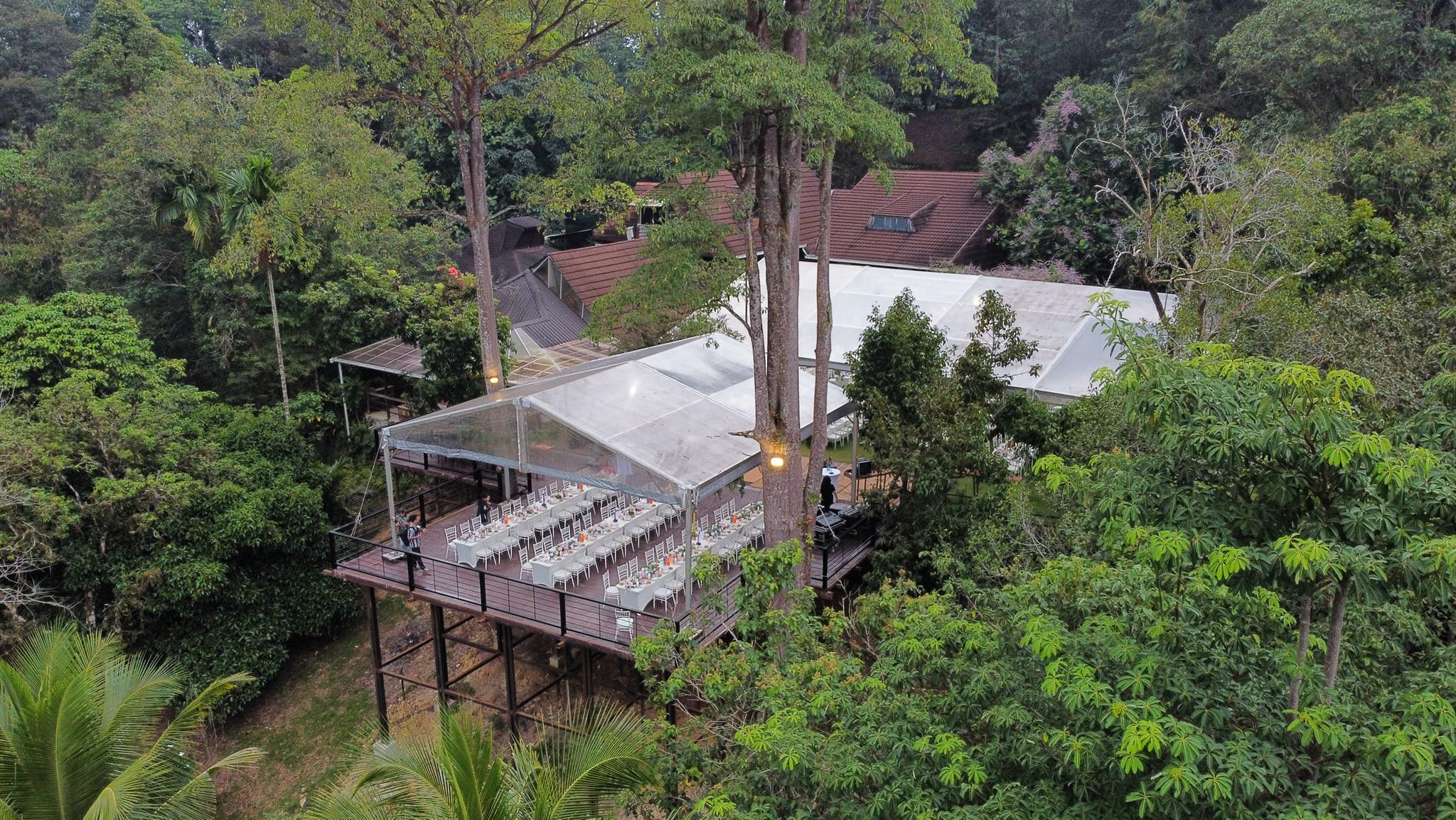
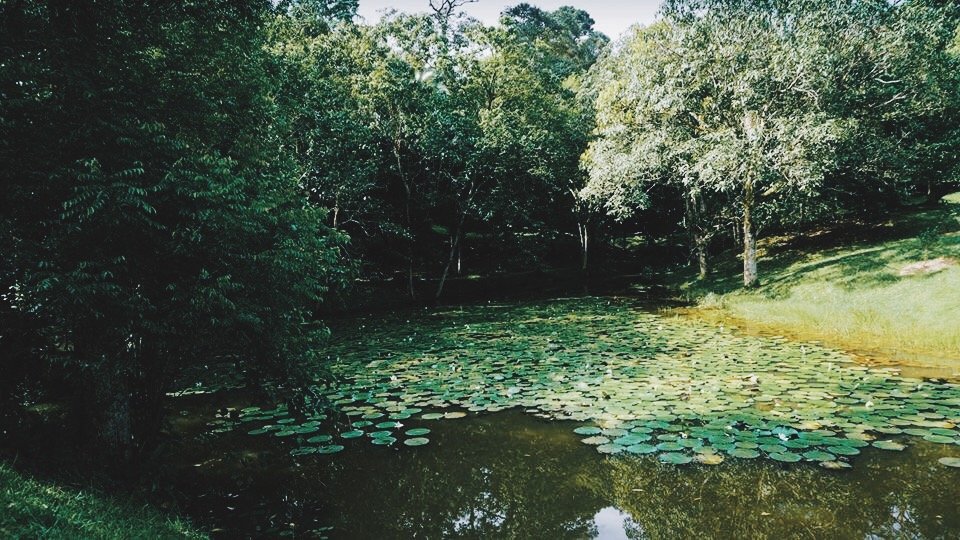
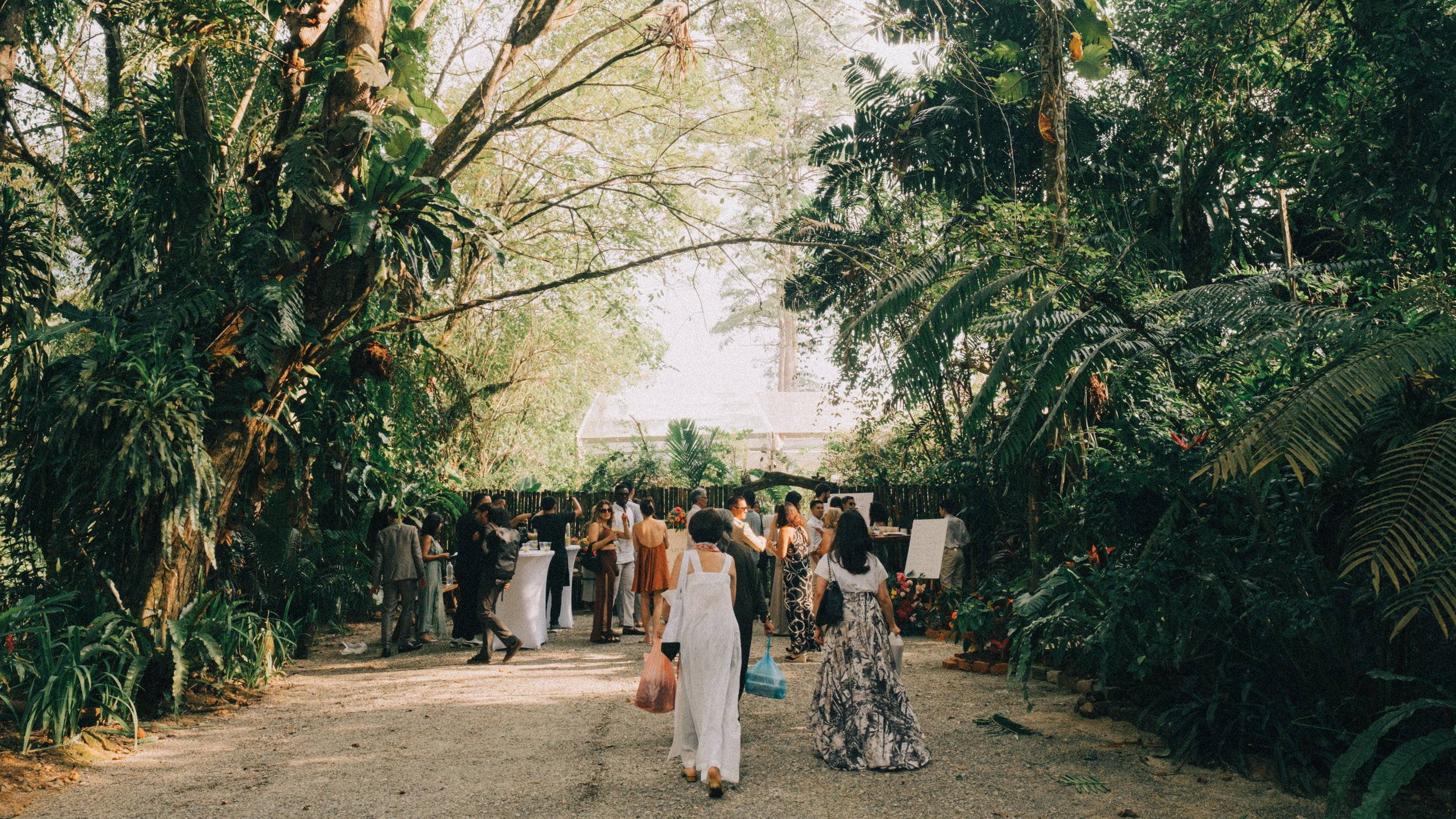
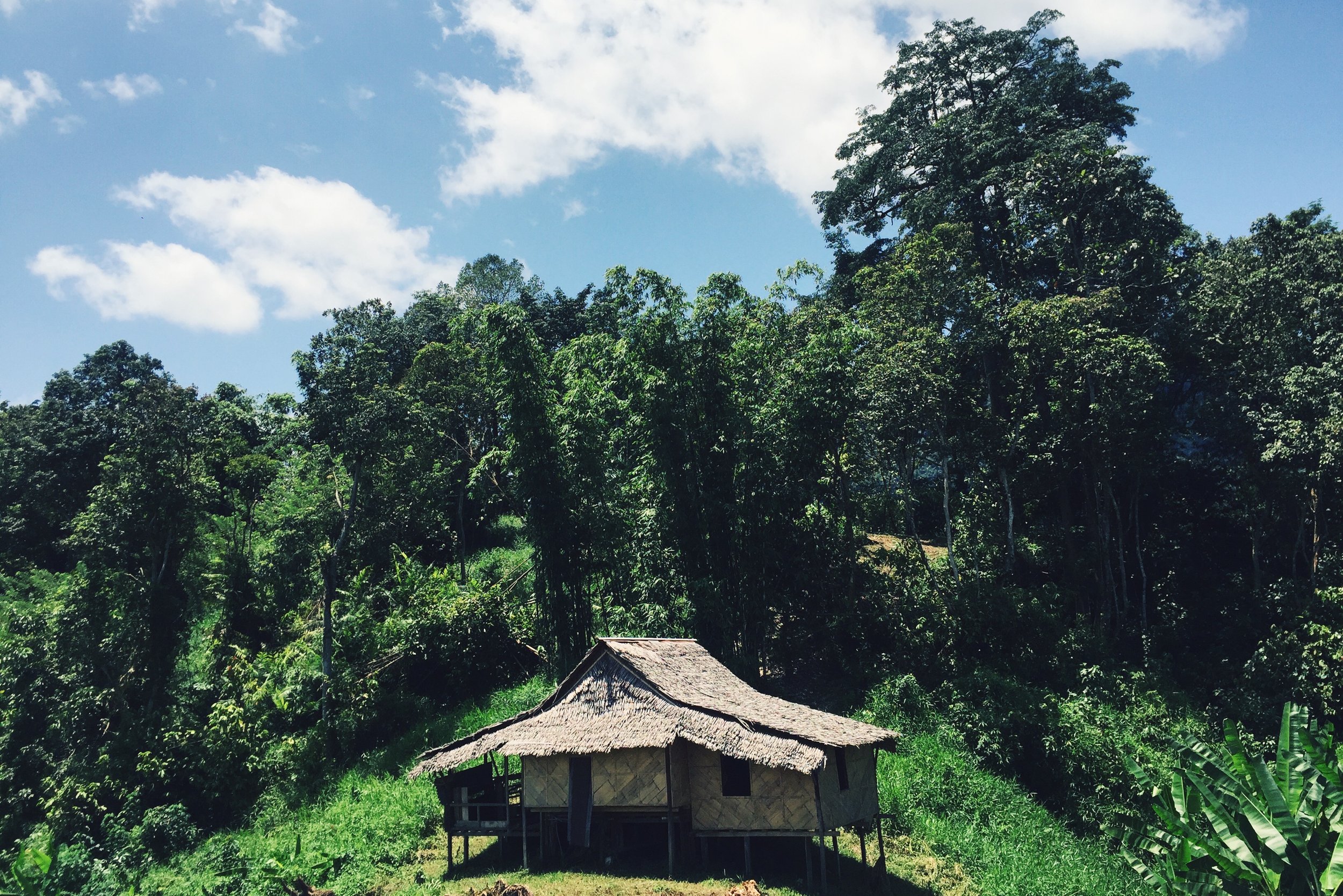

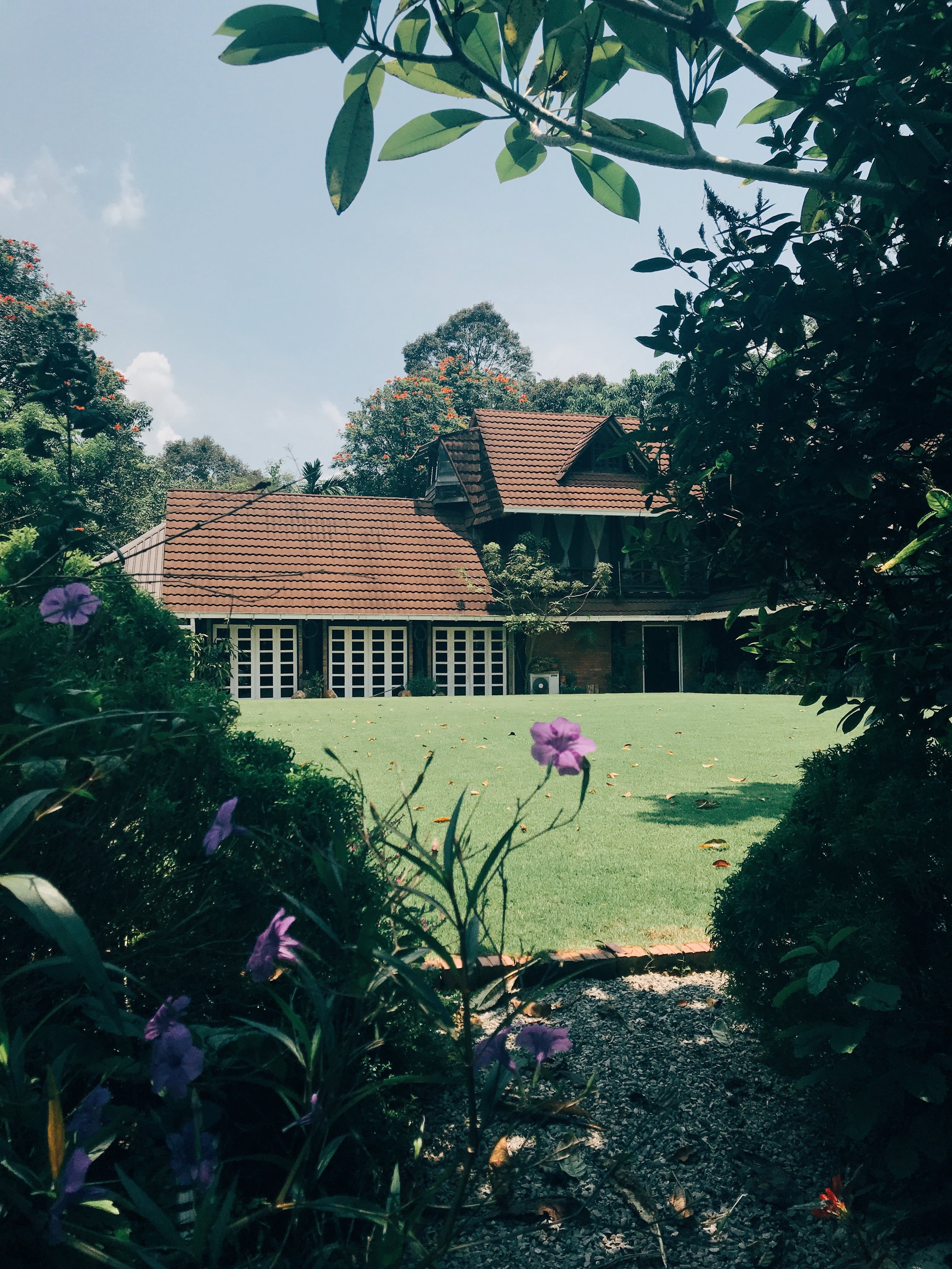
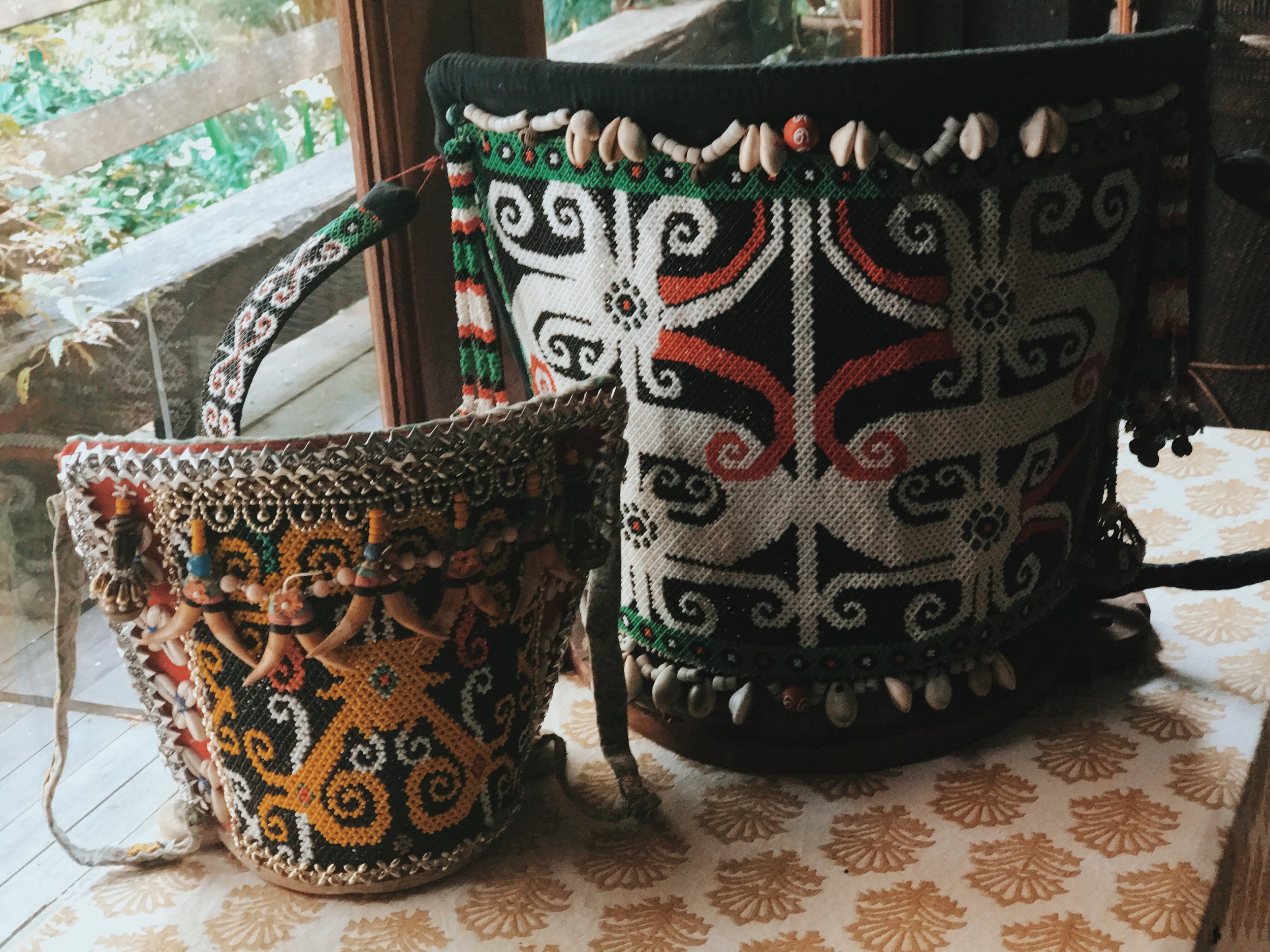
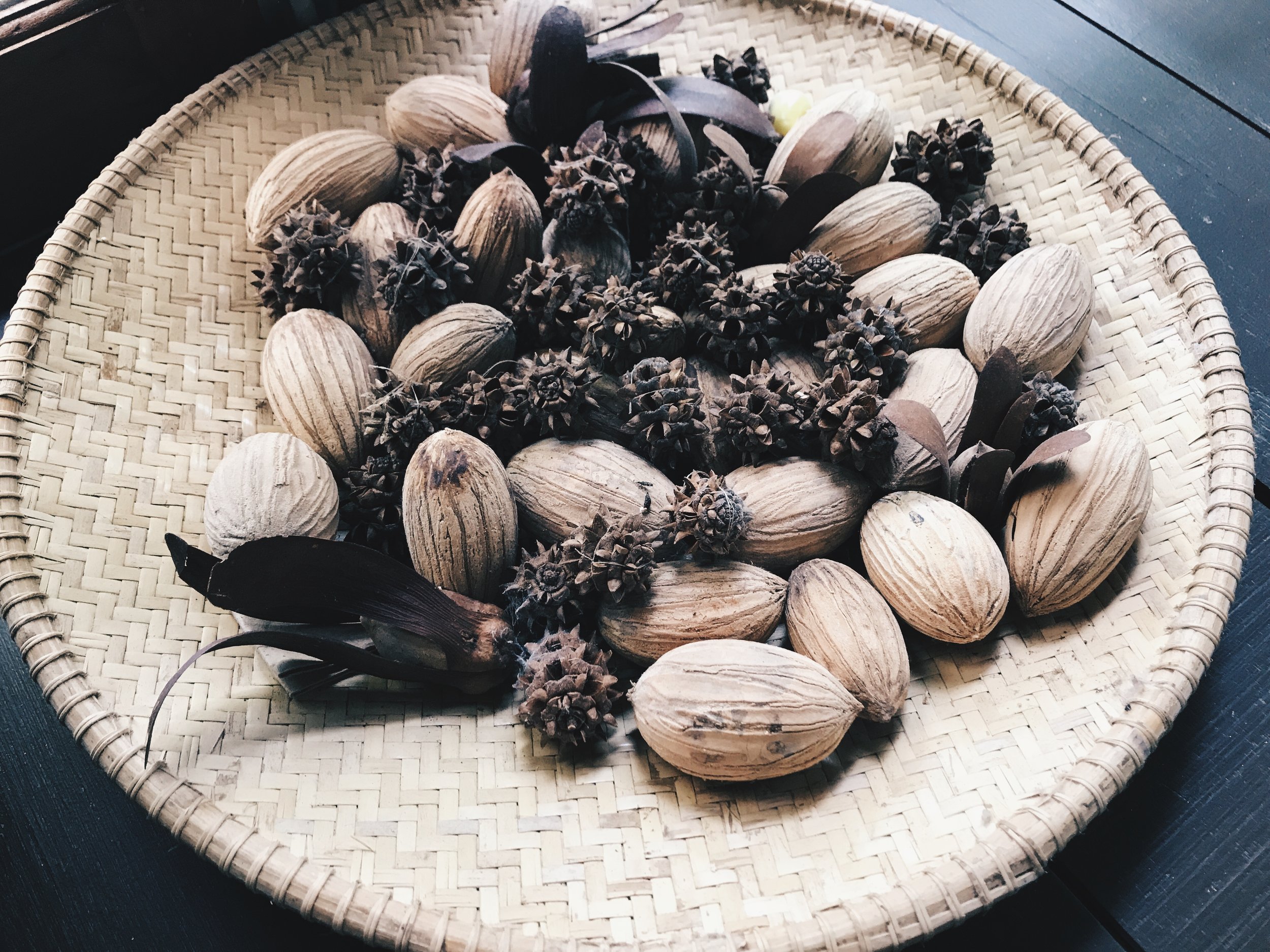
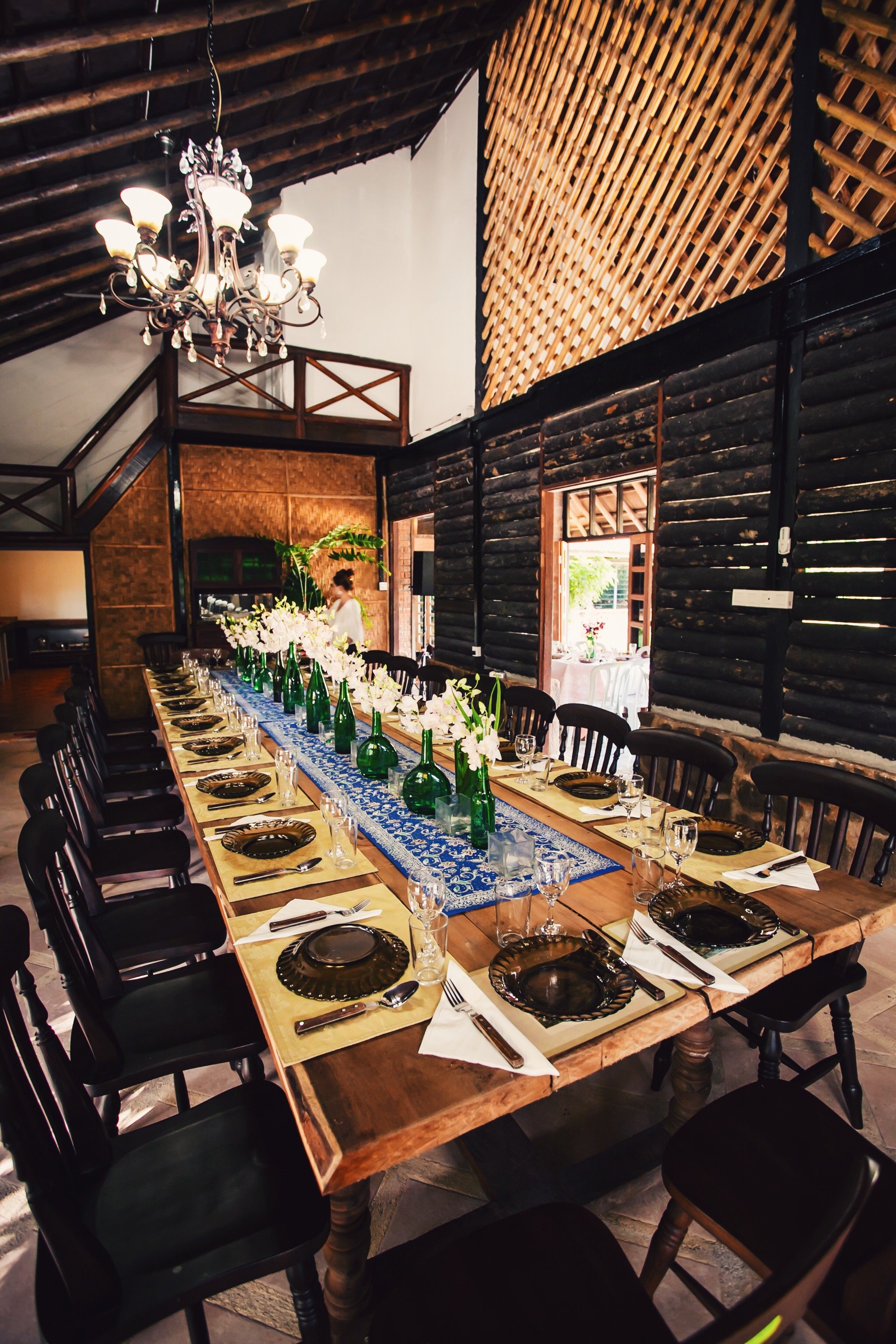
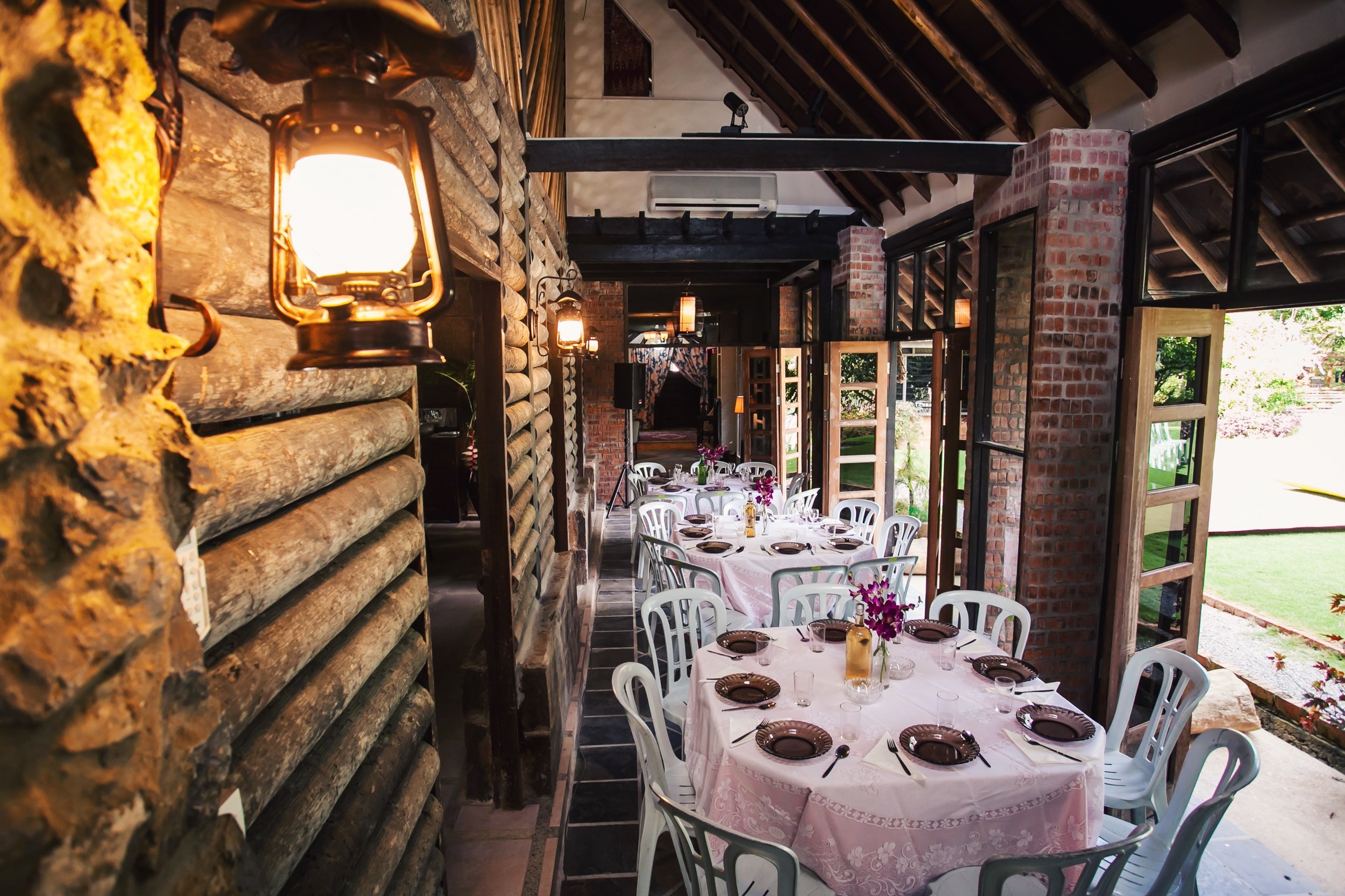
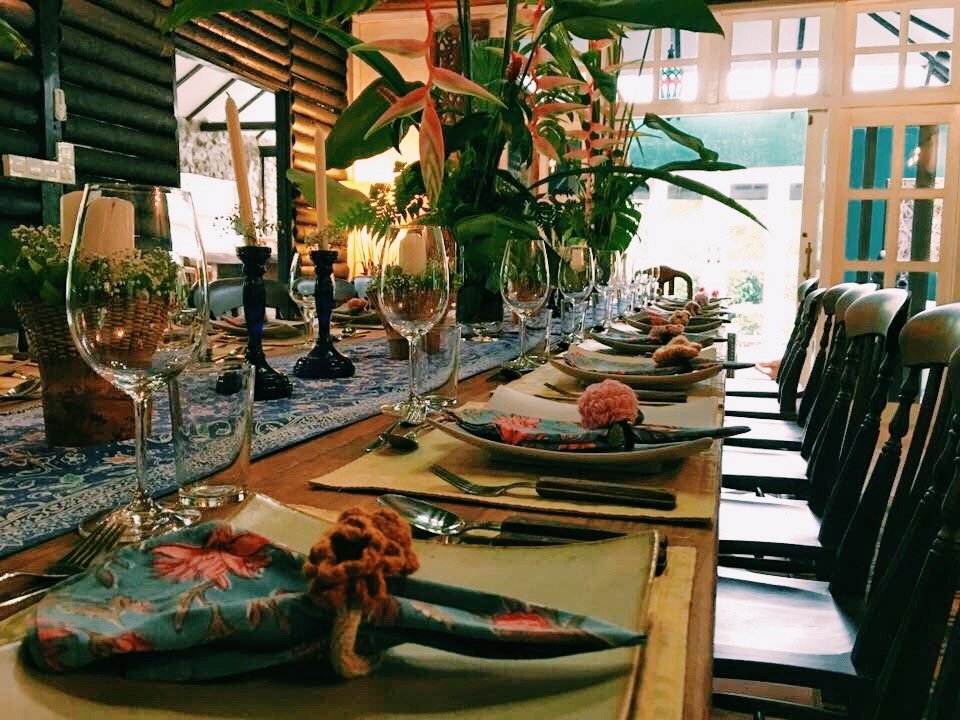
The Property
The Patriarch of the Family - Babuk Ridu
Once Upon a Time : A Farm Called “Gaatu”
Ironwood Valley Farm’s story begins at the foot of Bung Sadung, the mountain site of the ancestral longhouse home of the Bukar tribe, and the source of Gaatu stream. The whole valley and plain through which the stream meanders is called Gaatu. Back when the valley was still in its primal state, belian trees were in abundance. There were three deep ravines over which felled giant belian tree trunks of 20 metres or more served as crossings ( Tayan Tahas ) connecting the jungle tracks to the farms and surrounding villages.
Gaatu is on the Baki-Riih Road, between the Bukar villages of Kampong Baru and Kampong Ta-ee in the Serian District
The Original Headhouse of Kampong Ta-ee circa 1890
Kampong Ta-ee, where Babuk Ridu was born
Humble Beginnings
Babuk (Grandpa) Ridu, like his father and ancestors before him farmed wet padi on the creek by the river and hill padi on the slopes. Later, in the 1950s he added rubber and pepper on the surrounding hill slopes. In 1969 his youngest son Jacob came back from studies in England. He spent most of his weekends back to Babuk’s bamboo farmhouse and helped improved the farm and orchard. When he took over the Presidency of Dayak Bidayuh National Association in 1970 and on his rounds to the Bidayuh homeland, he noticed that the villagers were selling their farmlands for cash to support their children’s education and wanted to halt it. He thought the best and sustainable solution for the kampong Dayaks is to continue to emulate their diligent farming parents but to adopt modern practices and plant marketable cash crops. He had to do what he preached! And having been inspired by the gentry farming in Suffolk of one of his friends and mentors Lord Medway, now the Earl of Cranbrook, he began modernising his father’s farm. He sincerely believes that modern farming, as a way of life, would not only provide the finance needed but will also keep their land intact in the family, which to the Dayak Bidayuh is crucial.
He converted the wet padi farms into a series of 4 huge ponds, as a moat hugging the hill upon which he built the family house. He learned to rear cows and kept several Brahman cattle, and a Charolais amongst the local breed.
Together with the support of his two older brothers, Sulis and Andrew and sister, Sagas, they acquired a total of 120 acres by mid1970s. They farmed pepper, cocoa as cash crops and planted an orchard of durian, rambutan, terap, langsat, mangosteen, mangos, dabai, jackfruit, tampoi, and all manners of tropical fruits. For a long time, the farm and orchard were sustainable and was a good source of income for Babuk Ridu.
In 2005, Babuk Ridu and his eldest son, then Temenggong Sulis decided on a family settlement to divide the land between the siblings. The 40 acres that belongs to Jacob became Ironwood Valley Farm. The main house which Jacob designed and built went to him and he bought the cottage which was designed and built by Andrew for Sulis before he died.
The Early Farmhouse
In the early years there was no motorable road from the main Kuching-Serian road to the Bukar villages surrounding Bung Sadung. The farm was accessible by a jungle footpath and materials had to be backpacked to and from the farm to the village and the nearest neighbourhood bazaar at Baki. As the farm was a two hour walk from Kampong Ta-ee, Babuk Ridu like other farmers whose farms are far from the Kampongs, built two semi-detached farmhouses. These organic buildings were built on longhouse concept for extended and intergenerational family living. They sat on a large compound by the side of two fishponds and stood on belian stilts. The floors were made of partly hand-sawn timber board and bamboo splits and the walls were of pleated and woven bamboos. The roof was of thatched sago leaves.
The kitchen was always warmed by a traditional hearth that was fired by wood collected from the compound. Wild ferns, torch ginger flowers, bamboo shoots foraged by the banks of Gaatu stream and the vegetables and herbs collected from the garden provided the family with the freshest of vegetables. Fish were a plenty from the stream and the pond. Babuk Ridu always had free range local chicken that provided eggs sometimes meat for pansuh.
Children learned as they join the adults farming, foraging, fishing and cooking. When night fell, they would sleep on the sleeping platform on pandanus mats, under the mosquito net and an adult would tell them tales of their ancestors with the sound of the night and the jungle outside.
Renovation and Rebirth
For Jacob, Ramin Gaatu (Gaatu house) was built as his enduring gratitude for his God-given ancestral land. It is his translation of a longhouse living in a contemporary home. For years it became the spot on earth where the Ridu children watched plants grow, fruits ripening, collected fallen durians, and during the fruit season they watched in awe flights of bats above the valley in the evening and listen to the cacophony of insects and night birds on starry nights. Like a longhouse, Ramin Gaatu was designed with the lure of unexpected corners, rooms and verandahs where inspiration and imagination are ignited by mountains in the distance, and the whispers of the trees in the wind just outside the windows. It was designed by Jacob himself and built by builders and craftsmen from the surrounding villages. Apart from the tiles, cement, and roofing materials the rest of the building materials were collected from the jungles around the farm. Bamboos and rattan are pleated and woven to decorate walls, lianas were used as lattice around the lanai, thick bark from old timbers were dried and fashioned as slabs to give added textures and patterns on the walls, whole logs of serumah timbers were used as rafters, 2-inch thick hand-sewn boards cover the whole first floor and attics of the two houses.
Ramin Gaatu, the farm and orchard went through a sad period of neglect in the late 80s when the family went through a period of loss. In successive years the death of Andrew, then Jacob’s eldest son Rex followed by Babuk Ridu took a toll on Jacob. A landslide wiped out the rice barn, a drying deck at the back of the kitchen, two workers cabins and half of the kitchen. It was at this time that Jacob allowed his close friend who pastors a church in Kuching to renovate the main house for Church Retreats and farm the land for organic vegetables and free-range organic chicken.
After ten years the property was released back into the family’s care. Ryan, Jacob’s youngest son left his job to help not only to restore the two houses but also to revive the farm. To the main house a new living room, a bar and a den, a housekeeper’s quarters were added. An eight-foot concrete and rock slope stabilization were constructed all around the house and thus expanding the house forecourt. A 60x90 feet lawn laid with manila grass bordered by flowering tropical perennials and sheltered by a grove of mangosteen trees sits facing the dining room and library of the main house. The restoration brought a new lease of life to the house. As a tribute to Rex, who lived in a boarding house called The Rise, in St. Peter’s, York, UK, the family decided to name the house THE RISE. The house rose out from the ashes of grief.
The cottage was gutted and renovated with en suite bathrooms. A private deck sheltered by rambutan trees was added to the bedroom upstairs. The master bedroom downstairs has an opened air bathroom and a second room has a sky lit roof under the canopy of a large plump tree. An island kitchen was added next to the dining and a reading corner and the vaulted roof living room. A belian deck was constructed under the kandus (plum) tree for barbeques and alfresco dining. It has been a choice site for garden weddings on the property.
